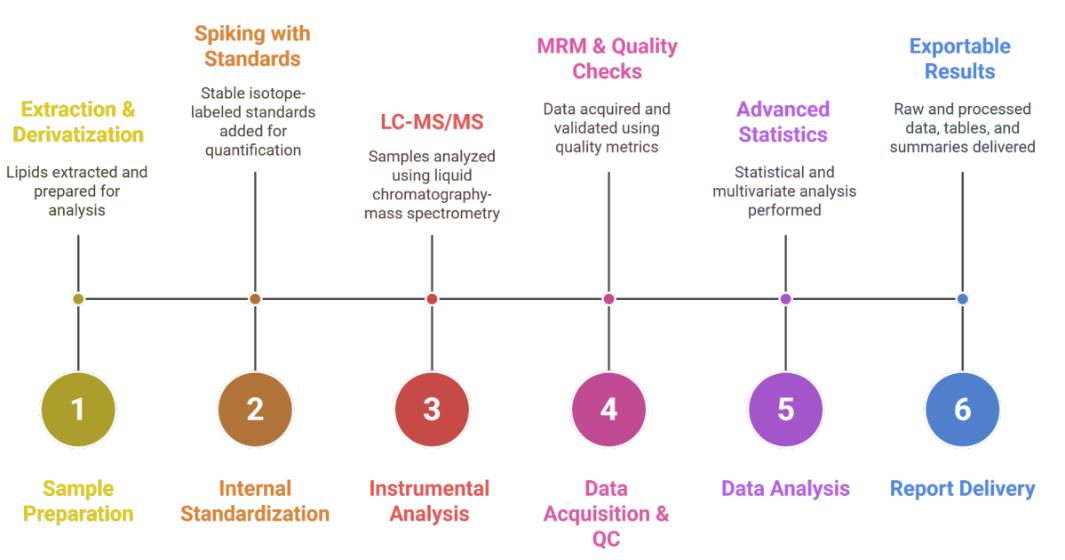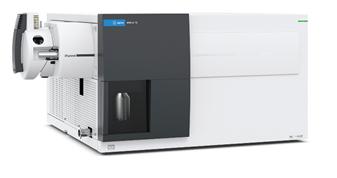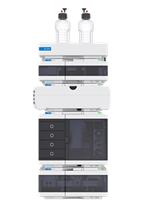Targeted Quantification of Acylcarnitines
Quantify over 30 acylcarnitines (C2–C26) including short-, medium-, long-chain, and unsaturated species.
Our services have earned the trust of companies, schools, and organizations globally, and we remain dedicated to maintaining that trust.
Acylcarnitines are a class of esters formed from carnitine and fatty acids, playing a pivotal role in mitochondrial β-oxidation and energy homeostasis. These metabolites act as shuttles, enabling the transport of fatty acyl groups across the inner mitochondrial membrane for subsequent oxidation. Variations in acylcarnitine levels are directly linked to disruptions in lipid metabolism, mitochondrial function, and amino acid catabolism.
Their unique structural diversity—ranging from short-chain (e.g., acetylcarnitine) to long-chain forms (e.g., palmitoylcarnitine)—makes acylcarnitines reliable indicators of metabolic flux across multiple physiological and pathological states.
Accurate and comprehensive acylcarnitine analysis enables researchers to:
Creative Proteomics empowers you with a full-spectrum acylcarnitine analysis service, generating reproducible and quantitative insights with high analytical depth.

Targeted Quantification of Acylcarnitines
Quantify over 30 acylcarnitines (C2–C26) including short-, medium-, long-chain, and unsaturated species.

Hydroxy- and Dicarboxylic Acylcarnitine Profiling
Detect hydroxylated and dicarboxylated acylcarnitines for oxidative and mitochondrial metabolism studies.

Branched-Chain Acylcarnitine Profiling
Analyze acylcarnitines from BCAA metabolism, such as isovaleryl- and methylbutyryl-carnitine.

Multi-Matrix Sample Support
Compatible with plasma, serum, urine, tissues, and cultured cells for flexible experimental designs.

Statistical & Differential Analysis
Includes fold change, CV%, PCA, HCA, and PLS-DA for comprehensive data interpretation.

Metabolic Pathway Integration
Map acylcarnitine data to β-oxidation, carnitine shuttle, and amino acid degradation pathways.
| Class | Representative Compounds | Typical Carbon Chains | Related Metabolic Pathways |
|---|---|---|---|
| Free Carnitine | Carnitine (C0) | C0 | Carnitine shuttle, fatty acid transport |
| Short-Chain Acylcarnitines | Acetylcarnitine (C2), Propionylcarnitine (C3), Butyrylcarnitine (C4), Isobutyrylcarnitine (C4-i), Valerylcarnitine (C5), Isovalerylcarnitine (C5-i), Tiglylcarnitine (C5:1) | C2–C5 | Fatty acid β-oxidation, branched-chain amino acid catabolism |
| Medium-Chain Acylcarnitines | Hexanoylcarnitine (C6), Octanoylcarnitine (C8), Decanoylcarnitine (C10), Dodecanoylcarnitine (C12) | C6–C12 | Mitochondrial FAO, peroxisomal oxidation |
| Long-Chain Acylcarnitines | Myristoylcarnitine (C14), Palmitoylcarnitine (C16), Stearoylcarnitine (C18), Oleoylcarnitine (C18:1), Linoleoylcarnitine (C18:2), Arachidoylcarnitine (C20) | C14–C20+ | Carnitine–acylcarnitine translocase activity |
| Hydroxy-Acylcarnitines | 3-Hydroxybutyrylcarnitine (C4-OH), 3-Hydroxyhexanoylcarnitine (C6-OH), 3-Hydroxyoctanoylcarnitine (C8-OH), 3-Hydroxypalmitoylcarnitine (C16-OH) | C4–C16-OH | Ketone body metabolism, oxidative stress marker |
| Unsaturated Acylcarnitines | Hexenoylcarnitine (C6:1), Octenoylcarnitine (C8:1), Decenoylcarnitine (C10:1), Palmitoleylcarnitine (C16:1), Oleylcarnitine (C18:1), Linoleylcarnitine (C18:2) | C6:1–C18:2 | FA desaturation and elongation |
| Dicarboxylic Acylcarnitines | Succinylcarnitine (C4-DC), Glutarylcarnitine (C5-DC), Adipoylcarnitine (C6-DC), Malonylcarnitine (C3-DC), Methylmalonylcarnitine | C3–C6-DC | Organic acid metabolism, amino acid degradation |
| Branched-Chain Acylcarnitines | Isobutyrylcarnitine (C4-i), Isovalerylcarnitine (C5-i), 2-Methylbutyrylcarnitine (C5-m), 3-Methylglutarylcarnitine (C6-m) | C4–C6-branched | Leucine, isoleucine, valine metabolism |
| Others / Rare Species | Laurylcarnitine (C12), Behenoylcarnitine (C22), Cerotoylcarnitine (C26), Hydroxydodecanoylcarnitine (C12-OH), Nonanoylcarnitine (C9) | C9–C26, modified | Exploratory biomarker research |

Agilent 6495C Triple Quadrupole LC-MS/MS: Used for targeted, ultra-sensitive quantification of short-, medium-, and long-chain acylcarnitines. Ideal for both high- and low-abundance analytes.
Agilent 1260 Infinity II HPLC: Serves as the front-end chromatographic separation system, enabling excellent peak resolution across diverse acylcarnitine classes.

Agilent 6495C Triple Quadrupole (Figure from Agilent)

Agilent 1260 Infinity II HPLC (Fig from Agilent)
Absolute Quantification: Each acylcarnitine species—short-, medium-, and long-chain—is reported with precise concentration values (e.g., nmol/mL or μmol/g), based on calibration with stable isotope-labeled internal standards.
High Sensitivity and Reproducibility: Limits of detection reach femtomolar levels. Coefficient of variation (CV) is maintained below 15%, ensuring consistency across biological replicates.
Comprehensive Output Format: All quantitative results are provided in raw and processed forms, including:
Descriptive Statistics: Summary tables include mean, standard deviation, and CV% for each compound across all samples.
Comparative Analysis: Fold change and significance testing (p-value, t-test, ANOVA) are included to support differential expression assessments.
Advanced Pattern Recognition: Optional multivariate methods such as:
Pathway-Level Integration: Detected acylcarnitines are mapped to relevant biological pathways including:
Metabolic Visualization: Results are presented with annotated pathway diagrams, heatmaps, and volcano plots to support biological interpretation.
Bioinformatics Support (Optional): Advanced analyses such as pathway enrichment, correlation network analysis, and multi-omics integration (with transcriptomics or proteomics data) are available upon request.
Custom Report Delivery: Final reports include all data files (raw and processed), visual figures, and interpretation summaries in a publication-ready format.
Explore our Lipidomics Solutions brochure to learn more about our comprehensive lipidomics analysis platform.


Metabolic Research
Quantitative insight into lipid metabolism and mitochondrial activity.

Nutritional Science
Assessing the metabolic effects of dietary fats or supplements.

Sports Physiology
Monitoring energy metabolism during endurance or high-intensity exercise.

Toxicology Studies
Evaluating metabolic disruption due to xenobiotics or stressors.

Aging Research
Investigating age-associated shifts in mitochondrial substrate utilization.

Comparative Biology
Species-specific studies of fatty acid oxidation across models.
| Sample Type | Required Amount | Storage & Transport Notes |
|---|---|---|
| Plasma / Serum | ≥ 100 μL | Collect using EDTA or heparin tubes; avoid hemolysis. Store at -80°C and ship on dry ice. |
| Cell Pellet | ≥ 1 × 10⁷ cells | Wash with PBS, centrifuge, snap-freeze in liquid nitrogen. Store at -80°C. |
| Animal Tissue | ≥ 50 mg | Freeze immediately after collection. Avoid preservatives. Store at -80°C, ship on dry ice. |
| Cell Culture Medium | ≥ 500 μL | Use serum-free medium if possible. Pre-clear by centrifugation. Store at -80°C. |
| Plant Tissue | ≥ 100 mg (fresh/frozen) | Rinse, blot dry, freeze or freeze-dry. Store at -80°C or in vacuum-sealed bags. |
| Bacterial Biomass | ≥ 5 × 10⁸ cells | Pellet by centrifugation, wash with PBS. Snap-freeze and store at -80°C. |
| Fungal Mycelia | ≥ 100 mg (wet weight) | Harvest, rinse if needed, freeze immediately. Store at -80°C. |
What types of biological samples can be analyzed?
We accept a wide range of sample types, including plasma, serum, tissue (e.g., liver, muscle), cell lysates, and cultured media. For tissue samples, a minimum of 20 mg is required, while liquid samples (e.g., plasma) need only 100 µL.
How should samples be prepared and stored prior to shipment?
Samples should be snap-frozen in liquid nitrogen immediately after collection to preserve metabolite integrity. Ship them on dry ice via overnight courier. Avoid repeated freeze-thaw cycles, as this may degrade acylcarnitines.
Can I compare acylcarnitine levels across different sample types (e.g., plasma vs. tissue)?
Yes, our normalization workflows account for matrix-specific differences. Concentrations are reported in standardized units (e.g., nmol/mL for biofluids, μmol/g for tissues), enabling cross-comparison.
How do I interpret elevated levels of specific acylcarnitines (e.g., C16-OH)?
Elevations in hydroxylated (e.g., C16-OH) or dicarboxylic species often indicate mitochondrial oxidative stress or β-oxidation bottlenecks. We provide pathway mapping and biological context in the report, but consultation with a metabolic specialist is recommended for clinical or complex cases.
What if my samples contain very low concentrations of acylcarnitines?
Our LC-MS/MS platform achieves a limit of detection (LOD) as low as 0.05 ng/mL, ensuring reliable quantification even for trace metabolites. If working with extremely low-abundance samples (e.g., cerebrospinal fluid), we can optimize pre-concentration steps upon request.
Can you integrate acylcarnitine data with other omics datasets (e.g., proteomics)?
Yes, we offer optional bioinformatics support for multi-omics integration. This includes correlating acylcarnitine profiles with proteomic pathways (e.g., mitochondrial enzymes) or transcriptomic data to uncover mechanistic insights.
Are there batch effects in large-scale studies?
Our use of stable isotope-labeled internal standards minimizes batch variability (<10% CV). For multi-batch projects, we apply cross-batch normalization algorithms to ensure data consistency.
How are unsaturated acylcarnitines differentiated from saturated ones?
Chromatographic separation combined with MS/MS fragmentation distinguishes isomers (e.g., C18:1 vs. C18:2) based on retention time and unique product ion patterns.
Do you provide guidance on follow-up experiments?
Yes, we offer complimentary consultations to help design validation experiments (e.g., stable isotope tracing for flux analysis) or suggest complementary assays (e.g., free fatty acid profiling) based on your results.
Are results compatible with public metabolomics databases?
All identified acylcarnitines are annotated with HMDB or Lipid Maps IDs, allowing direct integration into tools like MetaboAnalyst or KEGG for pathway enrichment analysis.
What if my samples are from non-model organisms?
Our assays are species-agnostic, as acylcarnitine structures are conserved across mammals. We adapt extraction protocols for unique matrices (e.g., plant or insect samples) upon request.
Can I track changes in even-/odd-chain acylcarnitines separately?
Yes, our quantitative panel differentiates even-chain (e.g., C16) from odd-chain (e.g., C5) species, which may reflect distinct nutrient utilization (e.g., gut microbiota-derived metabolites).
How do you handle samples with hemolysis or lipemia?
Mild hemolysis/lipemia has minimal impact due to our SPE cleanup steps. However, severely compromised samples may require re-collection, as RBC lysis can artificially elevate certain species (e.g., C16:1).

References
Services:
Online Inquiry
CONTACT US

